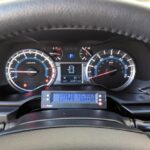Understanding your Honda’s OBD2 plugs and wires is crucial for successful engine swaps. This guide provides detailed instructions for various Honda engine swap scenarios in 1992-2000 Civics, focusing on OBD2 and OBD1 systems. We’ll cover wiring for VTEC, knock sensors, O2 sensors, distributors, and more, ensuring your swap goes smoothly.
OBD1 Engine/ECU into OBD1 Civic
Swapping an OBD1 engine and ECU into an OBD1 Civic is generally straightforward. However, specific wiring considerations depend on the engine and ECU combination.
D-series Engines with P28 ECU
- VTEC: For 1992 Civics, VTEC wiring is often plug-and-play using a 92-95 EX/SI engine harness. For other models, wiring the VTEC solenoid and pressure switch to the P28 ECU may be required (See Figure 1).
- O2 Sensor: Some models, like the CX, might require wiring adjustments for the O2 sensor if it’s not a 4-wire configuration.
- Knock Sensor and IAB: When swapping a B-series engine, you might need to wire the knock sensor and Intake Air Bypass (IAB) to the ECU, depending on the specific ECU used.
B-series Engines with Chipped P28/P30/P61/P72 ECU
Similar considerations apply to B-series engine swaps, with VTEC wiring often being plug-and-play for EX/Si models. Refer to Figure 1 for knock sensor and IAB wiring diagrams.
OBD2 Engine/OBD1 ECU into OBD1 Vehicle
This swap introduces complexities due to the different generations of engine management systems.
D16Y8 with P28 ECU
- Distributor: The distributor might require an OBD2A or OBD2B to OBD1 adapter harness.
- IAT Sensor: The Intake Air Temperature (IAT) sensor location differs between OBD1 and OBD2 engines. Relocation or manifold swapping may be necessary (Figure 3).
- Injectors and Alternator: Reusing OBD1 components might be required due to compatibility issues.
- CKF Sensor: The Crankshaft Fluctuation (CKF) sensor on the OBD2 engine is not used in this setup.
B-series Engines with Chipped P28/P30/P72 ECU
Similar considerations apply to OBD2 B-series swaps into OBD1 vehicles. IAT sensor relocation and the use of an OBD1 alternator are often necessary.
OBD2 Engine/ECU into OBD2 Vehicle
This scenario involves matching OBD2A (96-98) and OBD2B (99-00) components correctly, as ECU connectors differ (Figure 11). Mixing these generations is not recommended.
OBD Wiring Diagrams and Resources
Figure 1: OBD1 ECU Wiring
Figure 3: OBD1 IAT Sensor in Intake Arm
Figure 11: OBD2 Harness Comparison
This guide provides a foundation for understanding the intricacies of Honda Obd2 Plugs And Wires during engine swaps. Always consult specific wiring diagrams for your exact engine and chassis combination to ensure a successful and safe swap. Remember to properly address VTEC, sensor, and distributor compatibility for optimal performance and reliability.

